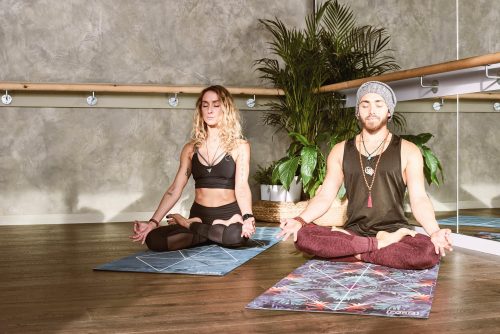A Beginner’s Guide To Meditation

The world that we live in today is nonstop. The amount of distractions, stressors, notifications, and noise that we deal with today is unlike any other time in history. With the huge amount of stimulation that our brains have to deal with on a daily basis, being able to tune out the outside world and get in touch with your mind and thoughts is an important practice.
Meditation is a great way for anyone who needs some peace and relaxation to prepare for the day, decompress, or take a break anywhere in between. Meditation takes practice, so consistency is key. Here are some helpful tips if you’re looking for a way to get started with your practice and don’t know how.
- Unplug-Distractions have to go
In this day and age, our phones are with us almost 24 hours a day, 7 days a week. Since we can be reached on so many platforms at all hours of the day, it trains our brains to be on high alert for notifications at all times. One of the best ways to manually reset your brain to not be focused on what is on your screen is to remove the screen altogether.
When you first start meditating, turn your phone off, or put it in another room on silent. This will help you to let go and start to focus on your own thoughts and feelings, not on those of who might be liking your pictures or texting you.

- Unwind-Take a deep breath
In addition to removing the distraction of your phone from the room, try to stay off of it for at least 20 minutes before starting your practice. This will help you to unwind, and start to get in the mindset of relaxation and looking within. Set a timer for your desired meditation time, sit upright in a chair, on the floor, or even in bed (but be careful you don’t fall asleep!) Start with your eyes open, and take notes of the things you can hear, whether it be traffic, talking, wind, or other noises. This helps you to be aware and mindful of the space you are in.
During this time, make sure to focus on your breathing. Breathe in for a slow count of four, hold for a count of three, and let your breath out for a count of five. This will slow your heartbeat and help you with the remainder of your practice.
3.Relax-Clear your mind
This is the most difficult step for most people. Once you’ve spent a few minutes sitting quietly and focusing on your breath, close your eyes. Make a mental note of how you are sitting and how you are feeling. Are your shoulders tight? Is your back a little sore? All of these things are good to notice, so that you can focus completely on how you are feeling. Many people during this step have a hard time staying focused. It is normal to have other thoughts occur, and to acknowledge them; however, as soon as you realize you are off topic, try to bring your thoughts back to the current moment.
This is where the aspect of practice becomes especially important. During your first few sessions, you may feel like your thoughts are loud and all over the place, but with practice you’ll be able to meditate without distraction from within. Make sure to keep working on your breathing, and stay aware of your body and how it feels.

When your session is complete, try to take a few minutes like you did at the beginning of your practice to sit with your eyes open, focusing on breathing and how your body feels. In the beginning this may be difficult, but after a few sessions, you’ll notice you feel more awake, alert, and like your mind has been reset.
Meditating in the morning is a great way to start your day, although some people prefer to meditate after work to decompress, or even on a lunch break for an extra energy boost. Regardless of when you make time for your practice, consistency is the most important thing. With practice, you’ll be a meditation pro in no time!